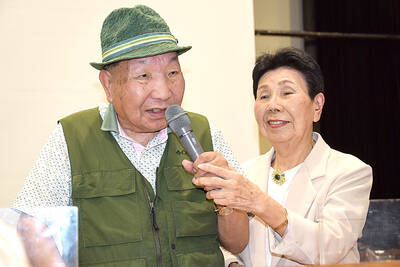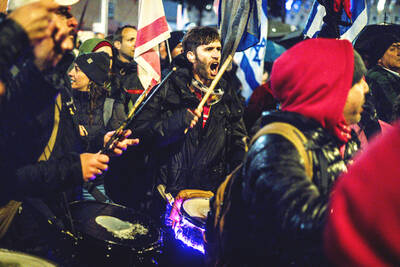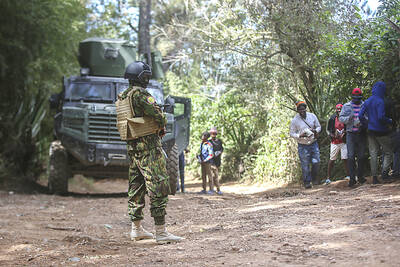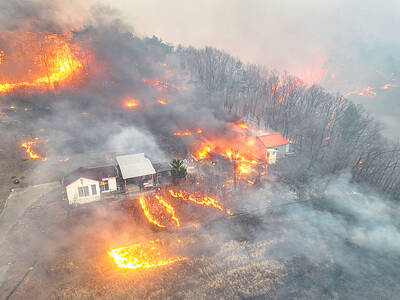A political battle over a Muslim cemetery in Jerusalem that began with charges of insensitivity leveled at plans for a museum of religious tolerance at the site has spread into a more curious fight about whether hundreds of nearby tombstones are even real.
The Mamilla cemetery had its peace disturbed this month by Israeli bulldozers demolishing gravestones in the middle of the night and by Muslim protests. The once sleepy plot of Muslim gravestones in Jewish west Jerusalem has become a flash point for rival claims to the holy city at the heart of the Israeli-Palestinian conflict.
Since early this year, activists from Israel’s Islamic Movement have been cleaning and restoring graves at the cemetery, where tradition says famous Islamic scholars are buried beside warriors who fought the Crusaders.
However, Israeli authorities said the activists went beyond restoration and manufactured hundreds of graves in a political attempt to cement their hold on the site.
NO REMAINS?
This month, municipal crews arrived at night with power shovels and erased about 300 low, coffin-shaped tomb markers that Israeli officials and archeologists say were fake and contained no human remains.
This drew protests from the Islamic Movement.
“The graves are not empty and the graveyard is not fake as they claim,” said Nuha al-Qutob, 35, who attended a recent rally.
She said her grandfather was buried nearby.
The cemetery first drew attention in 2004 with the beginning of work on the Museum of Tolerance. Undertaken with the stated goal of promoting coexistence, the museum is a project of the US-based Simon Wiesenthal Center, a Jewish organization named for a famous Nazi hunter.
A century ago, the cemetery was a rural plot sprawling outside the walls of Jerusalem’s Old City. Today it is hemmed in by luxury hotels, a high-end shopping mall and a cluster of clubs and bars.
Some of the unused cemetery’s land was rezoned by Israel in the 1950s and 1960s, with part becoming a park and one corner a municipal parking lot.
In a reflection of how even the best intentions can go awry in the holy city, the tolerance museum turned into a public relations debacle when it became clear that the plot of land slated for its construction — the parking lot — contained human remains.
The cemetery has not shrunk since the 1960s and Israel denies that any more land will be rezoned. However, Muslim activists fear parts of the plot will be severed and consumed.
When the attempts to block the museum in Israeli courts failed in 2008, the Islamic Movement began concentrating its efforts on the rest of the cemetery, outside the security-camera-mounted walls of the museum construction site.
The movement began bringing in volunteers and contractors to clean up the land and restore the graves with the city’s permission, investing about US$100,000, according to Mahmoud Abu Atta, a foundation spokesman.
A few months passed, Israeli officials said, before they noticed a dramatic increase in the number of graves. A pathway that city gardeners regularly used with their pickup truck was suddenly blocked by headstones and a row of gravestones mysteriously appeared over an underground sewage line and on top of one manhole cover, said Shlomo Chen, an inspector with the Israel Lands Authority in charge of the graveyard.
DEMOLITION
City crews began arriving at night to demolish the gravestones. Restored graves that the city deemed genuine were left untouched.
“It is important to note that this is one of the biggest frauds perpetrated in recent years, and its sole goal was to illegally take over state land,” the Jerusalem municipality said.
Abu Atta said all of the markers were constructed atop genuine graves, though in some cases nearly nothing was left of the original. He also indicated that the precise location of the graves was beside the point.
“If you dig a few meters down anywhere here, you’ll find bones,” he said. “We just want to guard the cemetery.”

DEATH CONSTANTLY LOOMING: Decades of detention took a major toll on Iwao Hakamada’s mental health, his lawyers describing him as ‘living in a world of fantasy’ A Japanese man wrongly convicted of murder who was the world’s longest-serving death row inmate has been awarded US$1.44 million in compensation, an official said yesterday. The payout represents ¥12,500 (US$83) for each day of the more than four decades that Iwao Hakamada spent in detention, most of it on death row when each day could have been his last. It is a record for compensation of this kind, Japanese media said. The former boxer, now 89, was exonerated last year of a 1966 quadruple murder after a tireless campaign by his sister and others. The case sparked scrutiny of the justice system in

The head of Shin Bet, Israel’s domestic intelligence agency, was sacked yesterday, days after Israeli Prime Minister Benjamin Netanyahu said he no longer trusts him, and fallout from a report on the Oct. 7, 2023, Hamas attack. “The Government unanimously approved Prime Minister Benjamin Netanyahu’s proposal to end ISA Director Ronen Bar’s term of office,” a statement said. He is to leave his post when his successor is appointed by April 10 at the latest, the statement said. Netanyahu on Sunday cited an “ongoing lack of trust” as the reason for moving to dismiss Bar, who joined the agency in 1993. Bar, meant to

DITCH TACTICS: Kenyan officers were on their way to rescue Haitian police stuck in a ditch suspected to have been deliberately dug by Haitian gang members A Kenyan policeman deployed in Haiti has gone missing after violent gangs attacked a group of officers on a rescue mission, a UN-backed multinational security mission said in a statement yesterday. The Kenyan officers on Tuesday were on their way to rescue Haitian police stuck in a ditch “suspected to have been deliberately dug by gangs,” the statement said, adding that “specialized teams have been deployed” to search for the missing officer. Local media outlets in Haiti reported that the officer had been killed and videos of a lifeless man clothed in Kenyan uniform were shared on social media. Gang violence has left

‘HUMAN NEGLIGENCE’: The fire is believed to have been caused by someone who was visiting an ancestral grave and accidentally started the blaze, the acting president said Deadly wildfires in South Korea worsened overnight, officials said yesterday, as dry, windy weather hampered efforts to contain one of the nation’s worst-ever fire outbreaks. More than a dozen different blazes broke out over the weekend, with Acting South Korean Interior and Safety Minister Ko Ki-dong reporting thousands of hectares burned and four people killed. “The wildfires have so far affected about 14,694 hectares, with damage continuing to grow,” Ko said. The extent of damage would make the fires collectively the third-largest in South Korea’s history. The largest was an April 2000 blaze that scorched 23,913 hectares across the east coast. More than 3,000